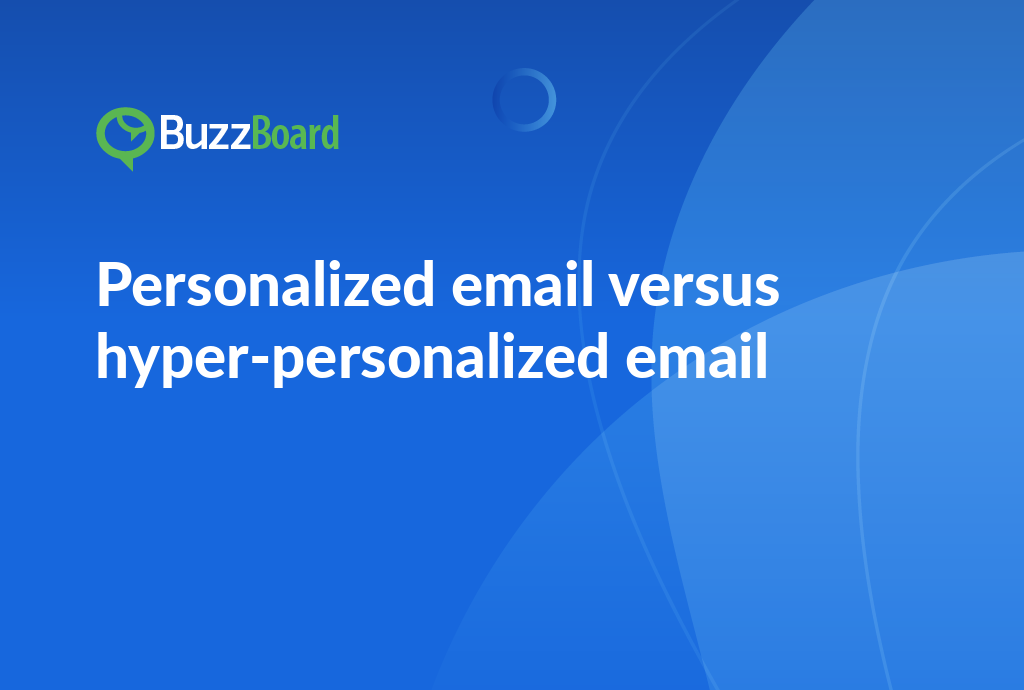Why User Experience Matters More Than Ever for Local Websites
For local businesses, a great user experience is no longer a nice-to-have, but a must-have for success. With 75% of users judging a company’s credibility based on its website’s visual design, a well-designed website is crucial for building trust and driving conversions. By striking a balance between visual appeal and content clarity, local businesses can create a seamless user experience that turns site visitors into loyal customers. Additionally, personalization is key, as tailoring content to individual users can lead to increased engagement and loyalty. In today’s competitive digital landscape, prioritizing user experience is essential for local businesses looking to stay ahead of the competition and drive growth.
The importance of user experience for local business websites
The importance of user experience for local business websites is indisputable. Enhancing local relevance and ensuring ease of use is crucial in boosting web traffic and conversion rates.
Firstly, ease of use is vital. It enables potential customers to navigate the website with ease, increasing the likelihood of customer conversion. An uncomplicated website design minimizes barriers that could discourage potential customers from making a purchase.
The visual appeal of a local business website is a crucial factor in attracting and retaining customers. A website that is aesthetically pleasing and well-designed can capture the attention of potential customers, drawing them in and encouraging them to explore further. A captivating design can also effectively communicate the local business’s unique value proposition, setting it apart from competitors and establishing a strong brand identity.
Moreover, the clarity of content is essential for a successful local business website. Clear and concise information allows prospective customers to quickly and easily understand the products or services offered, making it more likely that they will make a purchasing decision. This component is closely linked with ease of use, as viewers can leverage the information on the site to make informed decisions. A website that is easy to navigate and provides clear information can build trust with customers, increasing the likelihood of repeat business and positive word-of-mouth.
Local relevance and personalization are also vital aspects of user experience. Providing geo-specific content or personalized offers can establish an immediate connection with the local audience, making the website feel more tailored to their needs and interests. This can be achieved through features such as location-based search results, personalized product recommendations, or special offers tailored to specific neighborhoods or demographics.
Furthermore, incorporating local elements such as images, videos, or testimonials from satisfied customers can help to create a sense of community and authenticity, making the website feel more relatable and trustworthy. Additionally, incorporating social media feeds or reviews from local customers can provide social proof, demonstrating the website’s commitment to customer satisfaction and building trust with potential customers.
Ultimately, the user experience of a local business website plays a significant role in its success. A well-designed, easy-to-navigate website with localized content and personalization can greatly enhance user satisfaction, fostering customer loyalty and driving repeat business. By prioritizing user experience, local businesses can establish a strong online presence, attract and retain customers, and ultimately drive growth and revenue.
Some key takeaways for local businesses looking to improve their website’s user experience include:
- Investing in a visually appealing design that reflects the business’s brand and unique value proposition
- Ensuring clear and concise content that is easy to navigate and understand
- Incorporating local elements such as images, videos, or testimonials to create a sense of community and authenticity
- Providing geo-specific content or personalized offers to establish an immediate connection with the local audience
- Prioritizing ease of use and building trust with customers through clear information and social proof
By implementing these strategies, local businesses can create a website that is both visually appealing and functional, providing a positive user experience that drives customer loyalty and ultimately drives business success.
The visual appeal of a local business website is a crucial factor in attracting and retaining customers. A website that is aesthetically pleasing and well-designed can capture the attention of potential customers, drawing them in and encouraging them to explore further. A captivating design can also effectively communicate the local business’s unique value proposition, setting it apart from competitors and establishing a strong brand identity.
Moreover, the clarity of content is essential for a successful local business website. Clear and concise information allows prospective customers to quickly and easily understand the products or services offered, making it more likely that they will make a purchasing decision. This component is closely linked with ease of use, as viewers can leverage the information on the site to make informed decisions. A website that is easy to navigate and provides clear information can build trust with customers, increasing the likelihood of repeat business and positive word-of-mouth.
Local relevance and personalization are also vital aspects of user experience. Providing geo-specific content or personalized offers can establish an immediate connection with the local audience, making the website feel more tailored to their needs and interests. This can be achieved through features such as location-based search results, personalized product recommendations, or special offers tailored to specific neighborhoods or demographics.
Furthermore, incorporating local elements such as images, videos, or testimonials from satisfied customers can help to create a sense of community and authenticity, making the website feel more relatable and trustworthy. Additionally, incorporating social media feeds or reviews from local customers can provide social proof, demonstrating the website’s commitment to customer satisfaction and building trust with potential customers.
Ultimately, the user experience of a local business website plays a significant role in its success. A well-designed, easy-to-navigate website with localized content and personalization can greatly enhance user satisfaction, fostering customer loyalty and driving repeat business. By prioritizing user experience, local businesses can establish a strong online presence, attract and retain customers, and ultimately drive growth and revenue.
Some key takeaways for local businesses looking to improve their website’s user experience include:
- Investing in a visually appealing design that reflects the business’s brand and unique value proposition
- Ensuring clear and concise content that is easy to navigate and understand
- Incorporating local elements such as images, videos, or testimonials to create a sense of community and authenticity
- Providing geo-specific content or personalized offers to establish an immediate connection with the local audience
- Prioritizing ease of use and building trust with customers through clear information and social proof
By implementing these strategies, local businesses can create a website that is both visually appealing and functional, providing a positive user experience that drives customer loyalty and ultimately drives business success.
Analyzing how ease of use impacts user interaction with a local business website
Understanding the intricate relationship between “ease of use” and user experience on a local business website is a crucial aspect of digital marketing that sales representatives at agencies must grasp. The ease of use of a website has a direct correlation with its local relevance, visual appeal, clarity of content, and personalization features, all of which collectively contribute to a positive user experience. A website that is easy to navigate, visually appealing, and provides clear and personalized content is more likely to engage users and foster a sense of trust, ultimately driving business results.
Companies that prioritize a user-friendly interface often have a significant competitive edge in the market. In fact, a recent report suggests that a staggering 88 percent of online users are less likely to return to a website after a disappointing user experience. This highlights the importance of ensuring that local business websites provide a seamless and enjoyable experience for users. By doing so, sales representatives can increase interaction levels, generate more leads, and ultimately drive business success for their clients.
The local relevance of a business also plays a vital role in shaping user experience. Customers are more likely to engage with a company if they perceive it as locally relevant, which instills a level of trust that can be leveraged. This is particularly important for local businesses, as users are more likely to trust and support companies that are physically located in their community. By emphasizing a website’s local relevance, sales representatives can help build trust with potential customers and drive conversions.
A website’s visual appeal is also a critical factor in user experience. Websites with engaging visuals, such as high-quality images and videos, tend to see higher engagement levels and longer user sessions. This is because visually appealing content is more likely to capture users’ attention and hold their interest. In contrast, websites with poor visual design may struggle to engage users and may ultimately drive them away.
Content clarity is another essential aspect of user experience. Users favor websites that present information in a clear, easily digestible manner, and those that make it easy to find the information they need. By ensuring that content is clear, concise, and well-organized, sales representatives can help users quickly and easily find the information they need, which can lead to increased engagement and conversions.
Personalization also plays a significant role in user experience. Customizing content to a customer’s preferences can make navigation more manageable and enjoyable, which can lead to increased user engagement and loyalty. By using data and analytics to personalize content, sales representatives can help users feel more connected to a brand and more likely to return to a website.
By prioritizing ease of use, salespeople can increase interaction levels on local business websites, generating more leads and ensuring their clients’ success. By emphasizing local relevance, visual appeal, content clarity, and personalization, sales representatives can help create a positive user experience that drives business results. By understanding the intricate relationship between ease of use and user experience, sales representatives can help local businesses build trust with potential customers, drive conversions, and ultimately achieve long-term success.
Discussing the role of local relevance in enhancing the user experience
Local relevance is a crucial element that can significantly enhance a user’s interaction with a local business website. As the digital landscape continues to evolve at a rapid pace, local relevance plays a vital role in shaping the user experience. By incorporating local elements, businesses can create a website that is not only visually appealing but also easy to use, clear in its content, and personalized to the local audience.
One of the most effective ways to achieve local relevance is by designing a website that reflects the local culture, tradition, or language. This can be achieved by incorporating local symbols, landmarks, or even dialects into the website’s design and content. By doing so, businesses can create a strong connection with their local customers, making them feel more at ease and increasing the chances of conversion.
Visuals also play a crucial role in local relevance. Recognizable local landmarks or symbols can instantly create a sense of familiarity, fostering an immediate connection with the local audience. This can be achieved by incorporating high-quality images or videos of local landmarks, festivals, or events into the website’s design. Additionally, using local colors, fonts, or patterns can also help to create a sense of cultural authenticity.
Local relevance also has a significant impact on content clarity. When content is written in a language that is familiar to the local audience, it simplifies the user journey and makes it easier for customers to navigate the website. Using local terminology and jargon can also help to establish credibility and trust with the local audience. Furthermore, local relevance can also be achieved by incorporating local news, events, or promotions into the website’s content, making it more relevant and engaging to the local audience.
To optimize local relevance in digital marketing, salespeople at marketing agencies must be diligent in studying the local culture, traditions, and language. This insight should be integrated into the design, content, and overall marketing strategy of a local business website. By doing so, businesses can create a website that is not only visually appealing but also easy to use, clear in its content, and personalized to the local audience.
In addition to designing a website that reflects local culture and language, businesses should also consider the following strategies to optimize local relevance:
- Use local keywords and phrases in search engine optimization (SEO) to improve visibility in local search results.
- Create local content that is relevant to the local audience, such as news, events, or promotions.
- Utilize local influencers or partners to promote the business and increase its visibility in the local community.
- Optimize the website for mobile devices, as many local customers are likely to access the website on their smartphones.
- Monitor and analyze website analytics to identify areas for improvement and optimize the website for better user experience.
By incorporating these strategies into their digital marketing strategy, businesses can create a website that is not only local but also relevant, engaging, and effective in driving conversions.
Incorporating visual appeal and content clarity for an optimized user experience
Creating a remarkable user experience on your small business website has become a crucial aspect of establishing a strong online presence. To achieve this, it’s essential to strike a delicate balance between visual appeal and content clarity. This harmonious blend is vital for captivating your target audience, conveying your brand’s message, and ultimately driving conversions.
Visual appeal is a critical component of your website’s overall design, serving as your virtual storefront that invites potential customers to explore your online presence. A Stanford Web Credibility Research report found that a staggering 75% of users judge a company’s credibility based on the visual design of its website. This highlights the importance of creating a visually appealing website that not only grabs attention but also conveys professionalism and trustworthiness.
On the other hand, content clarity is equally essential for effectively communicating your business’s key details and values. Clear, concise content is what turns site visitors into potential customers, driving sales, promoting local relevance, and ultimately fostering loyalty. Well-crafted content improves site usability, allowing users to navigate your site effortlessly and find the information they seek quickly. This, in turn, enhances the overall user experience, encouraging visitors to return and explore your website further.
However, achieving the perfect balance between visual appeal and content clarity is crucial. Overemphasizing visual appeal could lead to a website that is visually stunning but lacks substance, making navigation challenging and potentially frustrating for users. Conversely, an over-focus on content clarity could result in a website that is informative but lacks visual appeal, leading to a lackluster presentation that fails to engage users.
To create an engaging user experience, it’s essential to merge both visual appeal and content clarity harmoniously. This can be achieved by incorporating high-quality images, videos, and graphics that complement your content, while also ensuring that your content is well-organized, easy to read, and free of clutter. By striking the right balance, you can create a website that is both visually appealing and informative, encouraging users to explore your site, engage with your brand, and ultimately become loyal customers.
In addition to visual appeal and content clarity, personalization is another critical aspect of creating an optimal user experience. By tailoring your content to your visitors, you can create a customized experience that encourages repeat visits and fosters a sense of loyalty. This can be achieved by using data and analytics to understand your target audience’s preferences, interests, and behaviors, and then using this information to create targeted content and offers that resonate with them.
By incorporating personalization into your website design, you can position your small business as a client-oriented local business that truly understands and values its customers. This, in turn, can lead to increased customer loyalty, retention, and ultimately, revenue growth. In today’s competitive digital landscape, creating a remarkable user experience is no longer a nice-to-have, but a must-have for small businesses looking to establish a strong online presence and drive success.
Highlighting the significance of personalization in user experience for boosting customer satisfaction
Local businesses must adapt and differentiate themselves to remain competitive in the market. One crucial area where this differentiation occurs is in the user experience (UX) of their website. Research has consistently shown that the UX of a local business’s website has a significant impact on customer satisfaction, influenced by a range of factors including ease of use, local relevance, visual appeal, content clarity, and personalization.
Ease of use and visual appeal are critical factors that shape a customer’s initial impression of a website. A website that is intuitive and visually appealing is more likely to engage users and encourage them to explore further. On the other hand, a website that is cluttered, difficult to navigate, or lacks visual appeal can quickly turn users off and drive them away. Local businesses must ensure that their website is designed with the user in mind, with a clear and simple navigation structure, high-quality images and graphics, and a consistent brand identity.
In addition to ease of use and visual appeal, local relevance is also a critical factor in shaping the user experience. A website that recognizes and addresses local cultural subtleties, values, and preferences can create a more immersive and relatable experience for users. This can be achieved by incorporating local content, such as news, events, and promotions, and by using language and imagery that resonates with the local community. By doing so, local businesses can create a sense of connection with their users and establish themselves as a trusted and authentic part of the local community.
Content clarity is also essential for creating a seamless and effortless user experience. A website that is easy to navigate and provides clear and concise information about the business’s products or services can help users quickly grasp what the business offers and make informed decisions. Local businesses should prioritize content clarity by using simple and straightforward language, breaking up large blocks of text into smaller, more manageable sections, and using high-quality images and videos to illustrate their products or services.
Personalization is perhaps the most critical factor in creating a unique and memorable user experience. By tailoring the website’s content, design, and functionality to individual users’ preferences and habits, local businesses can create a personalized dialogue that encourages repeat business and cultivates customer loyalty. This can be achieved through the use of data and analytics, which can help businesses understand their users’ behavior and preferences, and make data-driven decisions about how to optimize their website and marketing strategies.
The benefits of personalization in user experience are undeniable. By creating a personalized dialogue with their users, local businesses can increase customer satisfaction, drive repeat business, and build strong, long-term relationships with their customers. In addition, personalization can help businesses to stand out from the competition, differentiate themselves in a crowded market, and establish a reputation for excellence and customer-centricity.
To achieve a truly exceptional user experience, local businesses must commit to understanding their audience and constructing a website that appeals directly to them. This requires a deep understanding of the target audience’s needs, preferences, and behaviors, as well as a willingness to adapt and evolve the website over time. By doing so, local businesses can create a website that genuinely resonates with its users, significantly affecting their purchasing behavior and ultimately delivering a gratifying customer experience.
The user experience of a local business’s website is a critical factor in determining customer satisfaction and loyalty. By prioritizing ease of use, local relevance, visual appeal, content clarity, and personalization, local businesses can create a unique and memorable user experience that sets them apart from the competition and drives long-term success. By committing to understanding their audience and constructing a website that appeals directly to them, local businesses can create a website that genuinely resonates with its users, and ultimately deliver a gratifying customer experience.
Conclusion
The importance of effective communication in the workplace cannot be overstated. By understanding the different communication styles and adapting to them, individuals can improve their relationships with colleagues, build trust, and increase productivity. Additionally, by being aware of the potential pitfalls of communication, such as misunderstandings and conflicts, individuals can take steps to mitigate these risks and create a more harmonious work environment.
By implementing the strategies outlined in this article, individuals can become more effective communicators and improve their overall performance in the workplace. Whether you are a manager, team member, or entrepreneur, understanding the importance of effective communication and adapting your communication style to suit your audience is crucial for success.
Remember, effective communication is a two-way street that requires active listening, clear expression of thoughts and ideas, and a willingness to adapt and adjust. By prioritizing effective communication, individuals can build stronger relationships, achieve their goals, and create a more positive and productive work environment.









